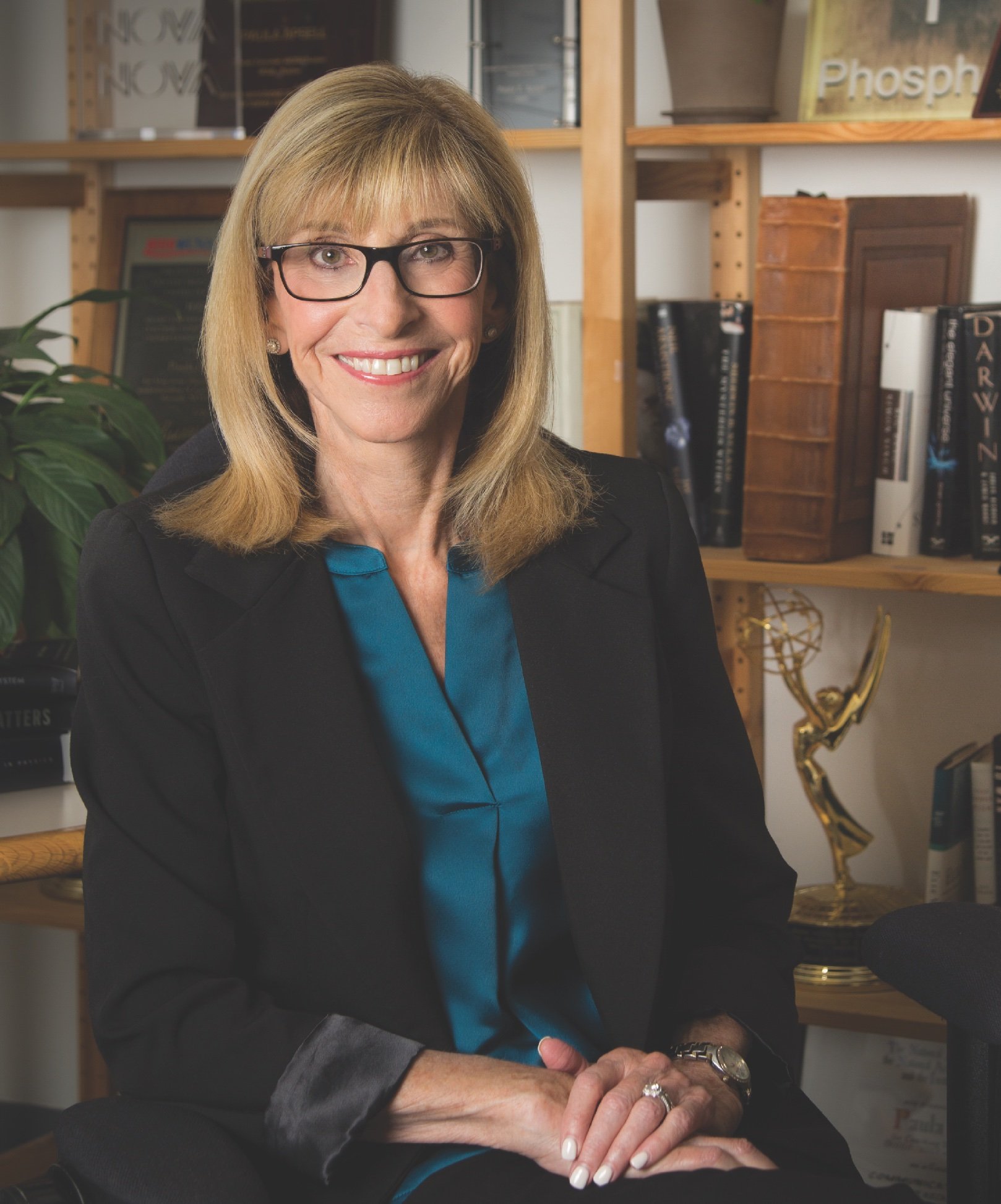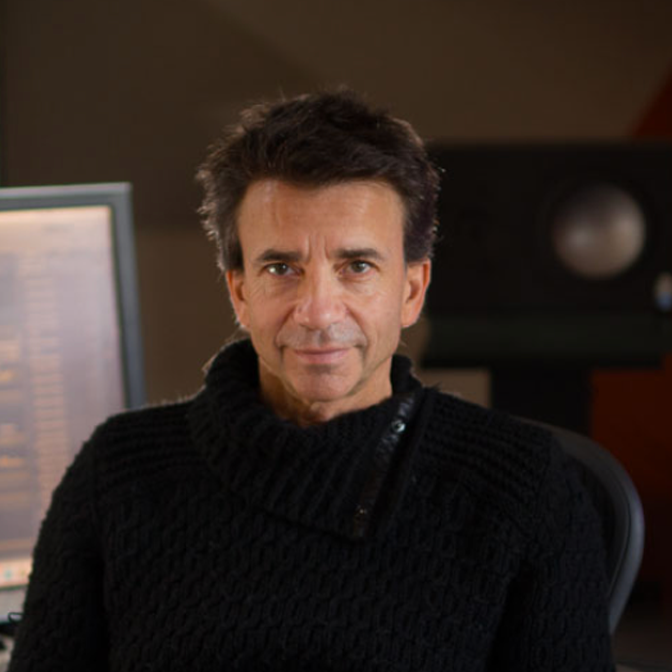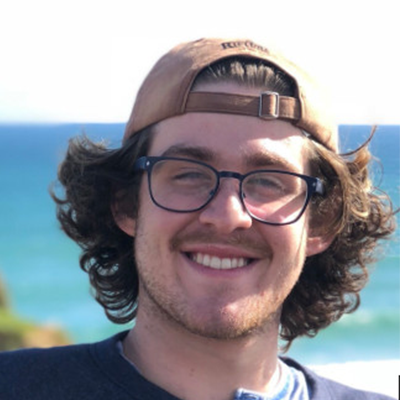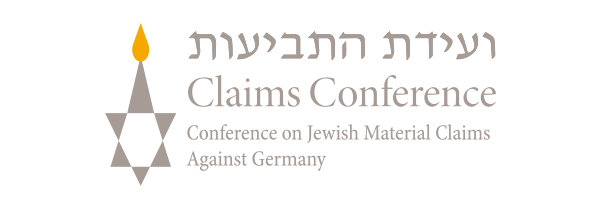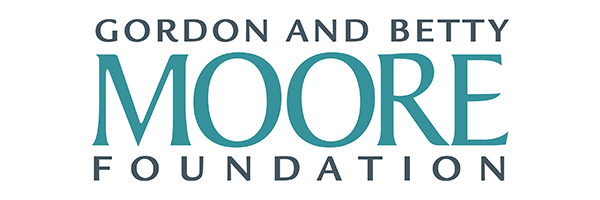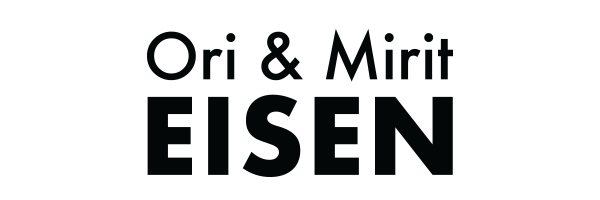FILMMAKERS
PAULA S. APSELL created the feature documentary Resistance — They Fought Back with the goal of correcting the myth of Jewish passivity during the Holocaust. Before that, she spent 35 years as the senior executive producer of the PBS NOVA science series, responsible for more than 650 documentaries in the sciences, technology, engineering, mathematics, and medicine, which won every major broadcasting award including the Emmy; the Peabody; the duPont-Columbia University Gold and Silver Batons; and an Academy Award® nomination for Special Effects. She has been recognized with numerous individual awards, including the 2018 Lifetime Achievement Emmy of the National Academy of Television Arts & Sciences. Now CEO of Leading Edge Productions, Inc., a 501(c)(3) public charity, she directed, wrote and executive producer Resistance — They Fought Back.
KIRK WOLFINGER directed Resistance — They Fought Back, traveling to Poland, Lithuania, and Israel to establish a unique visual approach to tell the important story of Jewish resistance during the Holocaust. He is an Emmy and Peabody Award winning filmmaker and President of Lone Wolf Media, production partner for the feature-length documentary film. Lone Wolf is widely known as a leader in factual entertainment and is responsible for many award-winning nationally broadcast documentaries on PBS as well as the National Geographic, History and Smithsonian Channels, and more than 25 documentaries for the science series NOVA alone. Kirk’s forte is adventure, science, and historical programming. Among the many NOVA episodes he produced and directed is Holocaust Escape Tunnel, which tells the story of a landmark archeological discovery of a tunnel that Jewish prisoners used to escape their Nazi and Lithuanian captors.
OWEN PALMQUIST, producer and writer of Resistance — They Fought Back, is a factual television writer and producer who has been making films since 2003 when he joined the Science Unit at National Geographic Television and Film. Since then, he has continually traveled the country and the globe producing a steady stream of long-form documentaries, television series, and digital shorts for nearly every major factual broadcaster including National Geographic, PBS, History, TruTV, YouTube, and the Smithsonian Channel. Owen’s past projects include writing six specials for PBS NOVA, including Holocaust Escape Tunnel and Last B-24. He has also produced and written limited series for History and Smithsonian as well as recurring series for National Geographic and Smithsonian.
LISA GOODFELLOW was producer and archivist for Resistance — They Fought Back, performing research and finding and accessing unique historical footage to illustrate the story of Jewish resistance during the Holocaust. The former owner of a bookshop, she made her way to documentary film production for Lone Wolf Media in 2013, allowing her to step from the pages of the history books to dig in, sometimes literally, to some of the world’s most fascinating and iconic historic moments for networks including NOVA, PBS, Smithsonian Channel and History. In 2020 Lisa was nominated for an Emmy for her episode of Smithsonian Network's America's Hidden Stories.
ADAM COSTA served as line producer and second-unit camera operator for The Resistance Project, keeping the project on schedule and budget shooting in Latvia, Poland and Israel. Adam has worked on over 200 hours of programming as a producer, writer, camera operator, and line producer for networks such as History, Discovery, Science, Smithsonian, ABC/Hulu, Animal Planet, HGTV, and DIY. Since 2018, Adam has served as Head of Production for Lone Wolf Media.
EZRA WOLFINGER served as Director of Photography for Resistance — They Fought Back, shooting the feature documentary in Poland, Lithuania, Israel and the U.S. He is a Maine-based but widely sought after cinematographer specializing in documentaries and cinema-verité commercials. A frequent collaborator with PBS NOVA, Newshour and Frontline, his recent projects have taken him from Seattle to cover ground zero of the Covid-19 pandemic in the U.S., to a Swedish shipwreck in the Baltic. When not working, Ezra can be found on the beach walking his dog, Pippa.
TONY BACON has spent the past year editing and creating a unique graphical approach for Resistance — They Fought Back. He is an Emmy Award winning documentary film editor with over 25 years of storytelling experience in the film and television industries who has edited award-winning films for PBS, National Geographic, Discovery Channel, Smithsonian Network, History, the BBC and the Silver Screen. Tony has also spent years in the non-profit sector making medical films used by UNICEF, W.H.O. and public health authorities around the world to train frontline health workers in developing regions. Tony is vice president of the board of The Latchis Theater, a historic four screen art deco theatre in southern Vermont, a member of the League of Historic American Theaters, striving to keep the movie palace a place to be revered and embraced by this generation and the next.
ROBERT NEUFELD served as music composer for Resistance — They Fought Back, creating a score for the film which references both the European classical repertoire and the Yiddish songs his father introduced him to as a child. He is an Emmy nominated composer with over 25 years of experience scoring film and television for clients including the BBC, National Geographic, PBS, Smithsonian, CBC and Netflix, as well as independent filmmakers.
YAEL BEALS served as co-producer for Resistance — They Fought Back, making unique contributions in locating and interviewing resistance survivors and their children. She began her career producing for television at Harvard-Smithsonian where she worked on TV series and documentary films. Currently Beals is working in drama development with Three Rivers Pictures and collaborating with Emmy and Peabody Award-winning executive producers, screenwriters and directors. Beals is on the board of Women In Film and TV International and Women in Film and Video New England and teaches film at Boston University. Beals earned her Master’s degree in film and television from Emerson College and a B.A. in photojournalism from Ohio University.
NOAH JACOBS is an aspiring filmmaker currently based in New York City. After graduating from Amherst College in 2020 he took an associate producer role on Resistance — They Fought Back, and then continued to work as an associate producer with Lone Wolf Media until late 2022. He recently started working as a production assistant at the National Basketball Association.
Professor Michael Berenbaum
Michael J. Bohnen
Ori & Mirit Eisen
Professor Richard A. Freund, Z”L
Richard A. Salomon
EXECUTIVE PRODUCERS
Professor Yehuda Bauer | Hebrew University, Yad Vashem
“The vast majority of the {Warsaw Ghetto} population had no access to arms. [But] they identified with the resistors and they refused to hand themselves over to the Germans. So it was not a passive resistance, it was an active unarmed resistance. And that is, after all, a matter of some 55,000, 60,000 people.”
Professor Michael Berenbaum | American Jewish University
“Janusz Korczak. The leader of an orphanage who went with his orphans to Treblinka. Are we going to say that he went like sheep to the slaughter? Are we going to say the teachers that stayed with their students, the doctors that stayed with their patients, the mothers that stayed with their children and didn't abandon them. Did they go like sheep to the slaughter? Or did they take care of those they were responsible to unto their last breath?”
Professor Steven Bowman | University Of Cincinnati Emeritus
“Nadjari ... we don't really know what motivates what he puts into his letter, other than, he wants to tell the story. He wants to see revenge. And that becomes a more compelling notion than giving up and getting out of the fight.”
Dr. Maria Ciesielska M.D., Ph.D. | Medical Review, Auschwitz Project
“TheBersohn and Bauman Children's Hospital was located in the ghetto. It was let's say an island in the ghetto.The hospital often couldn’t give them enough food …and they didn't have enough medicine. So the doctors and nurses treated their patients with kindness, the kindness of their hearts.”
Professor Havi Dreifuss | Tel Aviv University, Yad Vashem
“The Jewish children during the Holocaust were maybe the most miserable victims, if one can even class within this horrible victimhood. The fact that somebody is walking with them until the end, even when it's a bitter end, this is something that has its importance.”
Professor David Fishman | Jewish Theological Seminary
“The German started looting Jewish cultural treasures in Vilna in July 1941. But there were just too many Jewish books, and papers, and documents, and treasures in this city. They couldn't handle it, and that's why they established this slave labor brigade of Jews that would sort the material...called the Paper Brigade.”
Professor Richard Freund | Z”L Christopher Newport University
“People have this myth stuck in their heads that Jews went to their deaths like sheep to the slaughter…But this is where the real story begins…Jews did not go as sheep to the slaughter. They fought back.”
Professor Gideon Greif | Ono Academic College | Author, We Wept Without Tears
“The {Auschwitz} uprising came to its end, its tragic end with the killing murdering of 452 young Jewish courageous, brave men.”
Professor Patrick Henry | Whitman College Emeritus
“The most horrific statistic that I can think of, is that only 11% of European Jewish children who were alive in 1939, were still alive in 1945.”
Ilya Lensky | Director, Jews In Latvia Museum
“Everyone is very smart today. How didn't they realize? How didn't they know? But you never believe. You can believe that you will be mistreated and beaten and humiliated. You cannot imagine that you will be simply taken, led to the forest, and killed there.”
Dr. Miriam Offer | Western Galilee College
“It is important to note that saving lives, the value of human life // that he who saves one Jewish soul it’s as if you saved the whole world.”
Professor Avinoam Patt | University of Connecticut
“So people often want to know why the Jewish population didn't fight back. Half a million Jews crowded into the ghetto, why didn't they take up arms and fight back against the Germans? But the truth is, from the very beginning… they did resist in the ways that they knew best to do. Resistance that was a way of standing up against the German oppressors. Feeding the hungry, clothing, the poor taking care of orphans. These were strategies that Jews had used for centuries in which they fell back upon.”
Professor Dina Porat | Tel Aviv University, Yad Vashem
“The unarmed resistance is called in Hebrew, more or less, Amidah. Amidah is standing, standing up…I'm not yielding to the situation. Whatever you do that is against the situation is resistance.”
Rabbi Michael Schudrich | Chief Rabbi of Poland
“And if you always keep in mind that part of what the Germans wanted to do was to kill the body but also to kill the soul, to undermine humanity, the humanity of the individual. Therefore, if you never lost your humanity then, in a very real sense you’re helping to defeat the Germans.”
SCHOLARS
GEO-ARCHEOLOGISTS & STUDENTS
Paul Bauman | BGC Engineering Inc.
“This is one of the main recreation spots: it's up on a hill. It's windy. It's breezy. People come here for picnics to walk their dog. I've seen wedding ceremonies here but what people don't know is underneath where we're standing, this is where 50,000 Jews were buried in 14 trenches.
Dr. Richard Freund, Z”L | Christopher Newport University
“We really are hoping, and I’m not naïve. We’re really hoping that we can diminish genocide when perpetrators know they can never get away with their crime.”
Dr. Harry Jol | University of Wisconsin – Eau Claire
“When we take a look at sites like this, and we're looking at many Holocaust sites. And what's important is that survivors have told their story and we believe their stories. What we're trying to do is bring scientific methodology and scientific tools to verify those stories.”
Dr. Jacek Konik | Warsaw Ghetto Museum
Dr. Alastair Mcclymont | BGC Engineering Inc.
“This is one of the main recreation spots and encounter it's up on a hill. It's windy. It's breezy. People come here for picnic to walk their dog. I've seen wedding ceremonies here but what people don't know is underneath where we're standing, this is where 50,000 Jews were buried in 14 trenches.”
Colin Miazga | BGC Engineering Inc.
Dr. Philip Reeder | Duquesne University
STUDENTS
Connor Jol
Kayla Singleton
Mikaela Martinez Dettinger
Patick Wiley
Noah Hall
Grace Uchytil
Abi Fischer
OUR CHARACTERS SPEAK
WARSAW GHETTO HOLOCAUST SURVIVORS/RESISTANCE FIGHTERS AND THEIR CHILDREN
Vladka Meed, Z“L
“Although you see today how the pictures, mostly from Germans, pictures of Jews who were beggars and pitiful and this is taken because the Germans would like us only to be seen this way…. This was only one part of ghetto. It was true. There were beggars… but there was another kind of life, full of activities and spiritual resistance.”
Benjamin Meed, Z“L
“I organized a school in my building, and I became the teacher of that school. I was...I had never had a preparation of being a teacher, but there were no schools… all schools were illegal.”
Steven Meed, M.D. and Rita Meed, Ph.D. | Son & Daughter-in-Law of Vladka & Benjamin Meed
“Collective punishment. The Jews knew that you can start some resistance, you can aim a pistol and shoot one person, two people, whatever it is, but the Germans would then arrest 2000.”
Marek Edelman, Z”L
“At the end of December, 1942 we received our first transport of weapons from the Polish Home Army. It was not much--there were only ten pistols in the whole transport--but it enabled us to prepare for our first major action.”
Emanuel Ringelblum, Z"L I Leader, Oyneg Shabes Archive
“With a little peace, we may succeed in making sure that not a single fact about Jewish life at this time and place will be kept from the world…”
David Graber, Z”L | Oyneg Shabes Archive
“What we couldn't scream out to the world, we buried in the ground. I would like to live to see the moment when it will be possible to unearth this great treasure and shout out the truth. May this treasure fall into good hands may it survive until better times. May it alarm the world to what happened in the 20th century. Now we can die in peace. Our mission has been accomplished. Let history bear witness to that.”
Krystina Budnika | Warsaw Ghetto Survivor
“The bunker we were in did not collapse. But the soil it was covered with was red-hot. And the fire went on for a while until the storage room collapsed. It was the place where our supplies were. And we were left without anything.”
Mordecai Anielewicz, Z”L | Commnder, Warsaw Ghetto Uprising
“The dream of my life has become a reality. I have lived to see Jewish self-defense in the Ghetto in all of its greatness and splendor.”
KOVNO (KAUNAS, LITHUANIA) GHETTO
Dana Mazurkevich | Violinist, Boston University
“I was born in Kovno Ghetto. My mother and father decided that somehow, by miracle, they have to smuggle me out of ghetto. It required an unbelievable courage. Unbelievable. That they could give me away. And not knowing if they, they will survive and not knowing if I will survive. I think it was a big, big act of resistance because I will not let to take my child. I will not.”
VILNA GHETTO
Samuel Bak, Internationally Known Artist
“It was, absolutely, it was a resistance. And it was as indispensable as bread, I would say. As they say in Hebrew, not only on bread can man live, he needs also something for the spirit”.
Hadas Kalderon | Granddaughter of Avrum Sutzkever, Yiddish Poet
“The Germans had this idea to build a museum to the Jewish people in a world where there are no Jewish people, in order to show the world what a good job the Germans have done in saving the world from this people.”
Abba Kovner | Z”L Resistance Fighters, Vilna Ghetto
“We had ...formed our group starting from a precise ideology, our fight was not for self-preservation. It was not a question to...save myself, to save you, to save ... a neighbor. It was to fight the Germans.”
Vitka Kempner Kovner, Z”L Resistance Fighters, Vilna Ghetto
“One-thirty at night (the night of July 8, 1942), we put the bomb. We take the bomb and we put it under the rail tracks. We escaped very quickly. When the train goes [over it] at two, it explodes, and from far away we heard the explosion.”
Michael Kovner | Son of Abba Kovner & Vitka Kempner
“My father, he said, ‘Nobody can escape. Maybe here and there somebody can escape, but the Jewish people cannot escape from this. What the Jewish people can do, they can fight for their honor. That's it. To fight for their honor.’"
Yonat Rotbaine | Daughter of Ruzka Korchak
“I think the idea of Abba Kovner ‘that we will not go like sheep to the slaughter’ … was one of the most significant things in my mother’s life. She says that the resistance suddenly gave meaning to life. That is to say, even if we die, we will die as free people.
RIGA GHETTO
Dr. Margers Vestermanis | Historian and Resistance Fighter
“The idea of resistance practically started with the formation of the ghetto. As we used to say in the ghetto back then, there were two options. You would be undressed…and wait for the bullet. Or you would resist, and you would be shot anyway. You would die anyway, but that would be a different death. A meaningful death, defending the honor of your people.”
GRODNO GHETTO/AUSCHWITZ-BIRKENAU
Bela Hazan, Z“L | Jewish Courier
“Each one of us preferred to fall in combat than be led as sheep to the slaughter. The movement’s leadership, sought out girls with a “gentile” appearance who would serve as liaison-couriers between the different locations. This role was unsuitable for boys – who already from the age of eight days had their Jewishness marked on their flesh. I volunteered for the role, as I’d already gained experience and self-confidence impersonating a gentile and going outside the ghetto.”
Professor Yoel Yaari | Son of Bela Hazan
“They smuggled weapons, guns and grenades and so on and Molotov cocktails and bombs. This was a very dangerous mission. Then they also smuggled people out of the ghetto to put them in hiding places.”
BIELSKI BRIGADE, BELARUS
Michael Kagan | Son of Survivor Jack Kagan, Z”L
“My father wrote in his book that when he got to the forest, how did he feel? And he said, and here I quote, ‘I had come from a camp where thousands of Jewish people were being killed by the Germans and now they were all these fighters with guns. I felt very, very proud. There was great camaraderie at the camp. We were unhappy because so many members of our families had been massacred but we were happy because we were free and we were fighting back.’"
Betty (Batya) Cohen | Daughter of Survivor Fania Dunetz, Z“L
“Tuvia Bielski was responsible for saving 1200 people's lives. He accepted everybody: small children, old men and women, solitary women who couldn't fight, like my mother, everybody. [And] Tuvia said he would rather save one Jew than kill a hundred Germans...”
SOBIBOR CONCENTRATION CAMP
Chaim Melcer, Z”L, Sobibor Survivor
“Two of the boys, neighbors, Mendel and Moishe, two brothers, they jumped out the trains, and I jumped after them. My father, my mother, all together, next to the little opening, to the window. The cattle trains, they're little windows. They lift off the wires, and they jumped out, while the train was going. And I jumped out, just before Sobibor, after them.”
Esther Raab, Z”L, Sobibor Escapee & Survivor
“I came to the camp with a pair of brown leather boots, which, not everybody had, and I said to the group that we slept together, ‘With these boots, I'm going to escape from Sobibór. Don't ask me why. Don't ask me how. And maybe it's not, doesn't even make sense, but I'm going to escape with these boots.”
BUDAPEST
David Gur | Budapest Resistance Fighter
“They took out of the province half a million Jews and only the Jews of Budapest remained in Hungary and then one had to think how to save the Jews of Budapest.”
AUSCHWITZ-BIRKENAU
Marcel Nadjari, Z”L, Auschwitz Sonderkommando Resistance Survivor
“How could I do this? burn the bodies of my brothers in faith? And why didn’t I join them and put an end to it? But every time, the thirst for revenge stopped me”
Leon Cohen, Z”L, Auschwitz Sonderkommando Resistance Survivor
Eliezer Eisenschmidt, Z”l, Auschwitz Sonderkommando Resistance Survivor
Ronnen Harran, Son Of Ada Neufeld, Gunpowder Smuggler
Corey Stoll | Abba Kovner
Maggie Siff | Vladka Meed
Dianna Agron | Bela Hazan
Romy Rosemont | Esther Raab
David Rosenberg | Marek Edelman
Julie Benko | Vitka Kempner/Auschwitz Survivor
Joel De La Fuente | Marcel Nadjari
Andrew Kishino | Mordechai Anielewicz
Lisa Loeb | Ruzka Korchak
Mark Zeisler | Emanuel Ringelblum
VOICES
FUNDERS
THIS FILM WAS MADE POSSIBLE THROUGH THE GENEROSITY OF:
AND THROUGH THE GENEROSITY OF:
Arzak Foundation
Fondation Auschwitz
Feinberg Foundation
Claire Friedlander Family Foundation
Insight Through Education, Inc.
Karkomi Family Fund
Robert I. Lappin Charitable Foundation
Reva And David Logan Foundation
Harvey L. Miller Family Foundation
Jack And Goldie Wolfe Miller Fund
Adam And Gila Milstein Family Foundation
Neubauer Family Foundation
Polish American Congress Charitable Foundation
The Silpe Foundation
Slomo And Cindy Silvian Foundation
Smart Family Foundation Of New York
Targum Shlishi Foundation
Temple Emunah
U.S. Commission For Preservation Of America’s Heritage Abroad
Sheldon P. Apsell
Natalie J. Apsell
Diane C. & Arthur N. Dion
Sherri Ades Falchuk & Kenneth Falchuk
Douglas Hamilton & Michael Field
Frances Y. & Gary J. Feldman
Arnold C. Greenberg
Louise & Michael Grossman
Vivian Holzer
Bernard & Laurie Hasten
Jonathan Chaim Kushner
Nancy Lefkowitz & Joel Alpert
Sir Frank P. Lowy
Alan Nissenbaum & Ellen Zarrow Nissenbaum
Dr. Steven A. Polakoff
I. Martin Pompadur
Frank M. & Barbara F. Resnek
Geraldo M. & Erica M. Rivera
Charles Rosenblum Revocable Trust
David I. Singer & Emily A. Singer
Michelle & Gregory Singer
Jerome & Sharon Smith
Maria A. Staffiere
Susanne Simpson
Leslie Bornstein Stacks
Simon Vine
Liliane Willens Ph.D.

